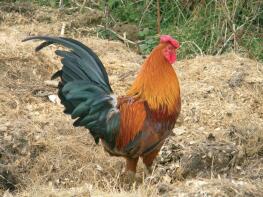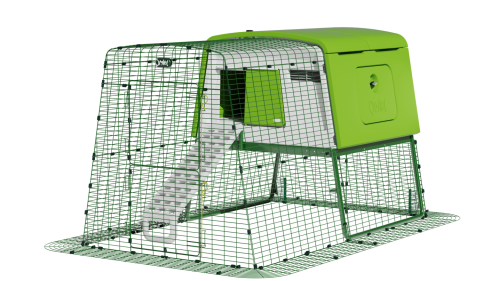Marsh Daisy Chickens
Marsh Daisy History
Marsh Daisy Behaviour
Marsh Daisy Varieties
Marsh Daisy Status
Marsh Daisy Pictures











Marsh Daisy For Sale
Latest Reviews For Marsh Daisy (5 of 9)
I am the caretaker of two WHITE Marsh daisies so yes they DO exist. - Christofer,
Yup, it's true... and a long story. They are only 6 weeks old now, so I can’t say much about them other than that they are absolutely lovely. Right from day 7 they wanted to get high up to sleep, so you will never need to train a (white) marsh daisy to roost. It's true what they say that this is a very hardy, tough bird. But they are also very caring towards my much smaller chicks (Black copper marrans) and are almost like their big sisters, showing the way and letting them toast up whenever they are cold. I have been told that there are only about 200 white Marsh daisies in the world right now, so if you already chickens, why not get stuck in and help out? :-) Chris
Awesome rooster - Anonymous,
We had a rooster(We were lucky to get it from a mix from the feed store that's near us) and he was very timid,A teacher to our seramas(Who he taught to roost and sit in the nesting box) and a good chicken to let the kids hold,As he wouldn't fidget and would even let you hold him like a baby! He was very friendly but had difficulty walking around as he'd fall all lot. He was very friendly,But sadly he died at 1-2 years and we're looking for another bantam rooster(And a hen,Too!) Very great for the kids if you tame them right :)
Excellent - Pauline,
The Marsh Daisy is a Lancashire breed, this is why we have them as we live in Lancashire 3 miles from where they originated. They are hardy, can cope with any bad weather. Have incredible personalities, very individual. They are a rather light breed, small, but this does not stop them putting our cuckoo marans in their place. They are long lived. Our cock died in January just short of 8 years old. Would.t be without them.
Beautiful, friendly and productive. - Sandy,
Marsh Daisies are a great wee bird to keep. They are very attractive and are ideally suited for the backyard farmer. They take up only about the same room as a bantam. They take to handling and become very tame. They are fun to watch. They get on well with other birds. They lay plenty of beautiful eggs, with a finish like porcelain. I thoroughly recommend them.
Good egg layer, friendly, beautiful but - Rhys,
They are not a tame bird. They love to be up high. I have had my 2 brown hens since June but I love them :) They lay good eggs. They love treats and will let me hold them at night. They are not violent but are incredibly strong so not good for children. They are brilliant with my other hens and are hardy. I would recommend these to anyone who wants a good layer who is confident and hardy and beautiful. Mine are a show line so they are stunning.



